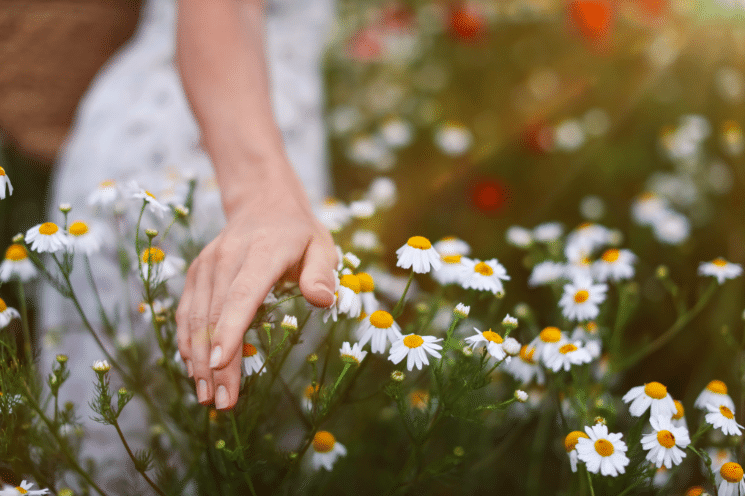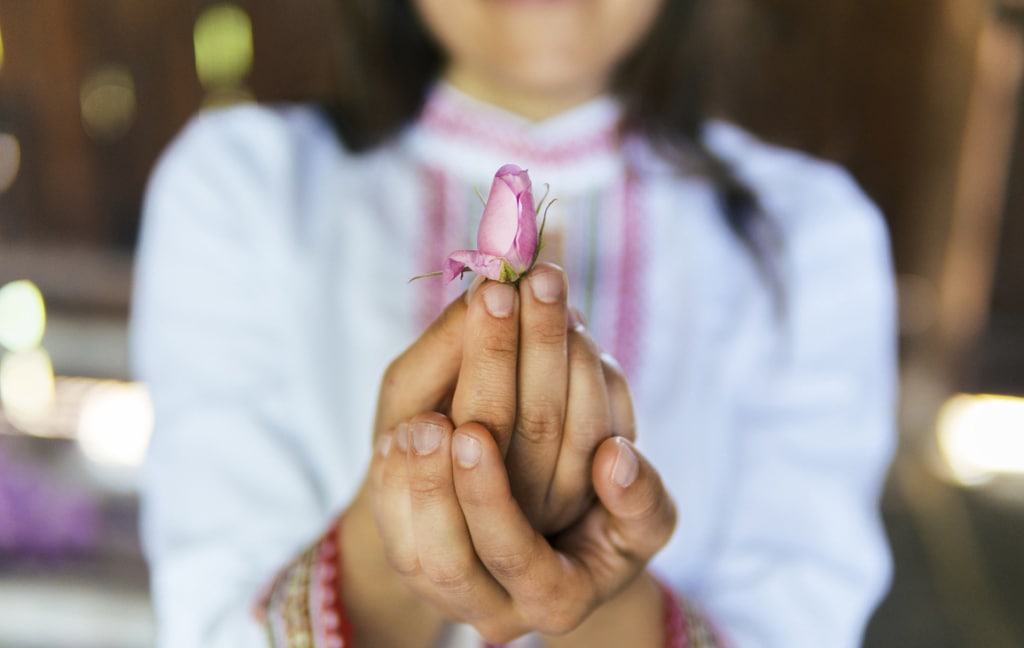Have you ever wondered why the same essential oil that melts away your tension leaves someone else feeling restless? Or why your favorite go-to digestive herb doesn’t help your friend? The answer lies in something ancient healers understood intimately: we are not all made the same.
This is the world of energetics – the foundational language of traditional holistic healing that allows us to see the invisible patterns connecting people, plants, and the rhythms of nature itself. Energetics teaches us that healing isn't one-size-fits-all. It's about matching the right plant to the right person at the right time.
Think of it as learning to read the signatures written into the very fabric of life. When you understand energetics, you're no longer just picking oils or herbs because they're “good for stress.” You're choosing them because they speak the same language as your body, because they answer the specific imbalance calling out for harmony.
Today, we're diving into the elemental foundation behind aromatic medicine (the place where aromatherapy and herbalism meet), an ancient energetic framework that will forever change how you work with plants, understand yourself, and guide others toward balance. Let's explore the holistic foundation of energetics in herbalism and aromatherapy.

An Ancient Wisdom: The Story of the 4 Humours
Picture ancient Greece, where traditional medicine was as much philosophy as practice. The great physician Hippocrates looked at the world around him and saw patterns. Fire crackling with heat and dryness. Water flowing cold and wet. Earth solid and cool beneath his feet. Air moving warm and light through the sky.
He theorized something at the time: these same forces exist within us. Every human being, he proposed, is composed of all 4 elements in varying amounts, and when these elements fall out of balance, illness follows. Later, another Greek physician named Galen expanded this theory. He suggested these elemental forces didn't just affect our physical health: they shaped our moods, our personalities, and our very temperaments.
From these observations emerged the Humoral Theory and its 4 temperaments:
- Fire = Yellow Bile = Choleric temperament
- Air = Blood = Sanguine temperament
- Water = Phlegm = Phlegmatic temperament
- Earth = Black Bile = Melancholic temperament
Each of us is born with our own unique blend of these 4 humours – like a fingerprint, no two exactly alike. This blend creates our personal constitution, the fundamental pattern that shapes how we move through the world physically, mentally, emotionally, and spiritually.
In this ancient framework, holistic health was defined as balance among the 4 humours. When one element dominated too strongly or grew too weak, disease emerged. The goal of treatment wasn't to suppress symptoms but to restore harmony through lifestyle changes, dietary wisdom, and traditional herbal medicine.

The 4 Elements in Traditional Medicine: Your Inner Landscape
Let's bring the 4 elements in traditional medicine to life. Instead of thinking of them as literal fire, water, air, and earth, picture them as philosophical principles, ways of describing the nature of matter, energy, and life itself.
Fire: Hot and Dry
Fire is the force of transformation and warmth. It's the spark of metabolism, the heat of digestion, the drive of ambition. In a person, fire shows up as someone who runs hot, has naturally dry skin, or possesses that unstoppable forward momentum. People full of Fire are passionate, quick to action, and natural leaders who burn bright.
Earth: Cold and Dry
Earth represents structure and stability. It's the bones that hold us upright and the endurance that keeps us grounded. Earth can manifest as someone who runs cold, tends toward dry skin, or possesses deep reserves of patience and reliability. Earth people are the bedrock: steady, thoughtful, and present.
Water: Cold and Moist
Water is fluidity and nourishment. It's the blood in our veins, the tears we cry, and the adaptability that helps us flow around obstacles. Water shows up as someone who runs cool, sweats easily, or moves through the world with empathy and intuition. Water people are the nurturers, the feelers, and the ones who hold space for others.
Air: Warm and Moist
Air symbolizes movement and breath. It's the oxygen that feeds every cell, the ideas that dance through consciousness, and the social connection that keeps us inspired. Air can manifest as someone who runs warm, perspires readily, or possesses that light, quicksilver quality. Air people are the communicators, the curious ones, forever in motion, and often the thinkers, or overthinkers.
Unlock Your Free Issue Of...
🌿 The Aromatic Medicine Garden Membership 🌿
Are you ready for a deeper, holistic dive into the world of aromatic plants? See what our membership is all about with your free sneak peek issue, including an hour-long plant talk and a 21-page plant profile pdf full of recipes and insights.

Your Unique Constitution & Personal Blueprint
Every human being is born with a unique mixture of these elements. This is your constitution – your energetic blueprint. But it’s also important to remember: your constitution isn't static. It shifts with age (many people tend to dry out and cool down as they get older, and don’t forget about menopause!). It changes with the environment (hello, dry winter air). It responds to lifestyle and things happening in our day-to-day life (stress, sleep, diet, etc). It evolves with our health history. This balance influences everything; not just whether we tend toward hot or cold, dry or moist, but also our psychological patterns and emotional tendencies.
Are you fiery and driven, always burning with new projects and quick to anger? Do you flow empathetic and intuitive like water, deeply feeling the emotions of those around you? Are you grounded and steady like earth, the one everyone relies on, sometimes to the point of forgetting your own needs? Or are you light and curious like air, your mind forever dancing with new ideas, sometimes struggling to land? The answers to these questions may change over time. And your temperament affects how you experience (and respond to) everything: plants, healing practices, and even emotions themselves.

Why This Ancient Wisdom Matters Today
Now we arrive at the heart of the elements in aromatic medicine: plants have elemental and energetic qualities, too. For example, Peppermint is cooling. Ginger is warming. Rose is moistening. Rosemary is drying. Some plants are considered neutral, or a blend of these energetic qualities. And when we understand both the plant's nature and our own constitution, we can create true harmony.
This is why Lavender – cooling, calming, moistening – might be the perfect remedy for someone with excess fire (hot, anxious, unable to settle). But that same Lavender might feel too sedating or even slightly aggravating to someone who already runs cold and needs warming, stimulating support. This also might explain why your friend swears by Jasmine, while you find it doesn’t really speak to you. Different bodies, different constitutions, different needs.
Consider someone who always runs hot: flushed face, irritable digestion, and a tendency toward inflammation. If they're experiencing digestive distress and reach for Ginger (a fiery, heating digestive herb), they might actually aggravate the issue, adding more fire to an already overheated system. But Peppermint, with its cooling and soothing qualities and that signature menthol chill, could be exactly what brings relief.
Of course, these are simplified examples – the practice gets slightly more complex when you dive deeper. But this basic framework reveals why it's not enough to just understand plants and their benefits. We must also work to understand the person receiving the plants. What does this unique individual need to return to balance? This is the art of traditional holistic medicine: not following protocols, but learning to read the patterns, to see the elemental forces at play, and to respond with wisdom.

Energetics in Herbalism & Aromatherapy:
Your Journey Into the 4 Elements
This is just the beginning. In the Elements & Personal Constitution Mini-series, we'll dive deep into each of the 4 elements, humours, and their corresponding temperaments:
- Fire / Choleric: Passion, creative, transformation, and the plants that temper excess heat while stoking Fire
- Earth / Melancholic: Structure, balance, depth, and the remedies that ground without heaviness
- Water / Phlegmatic: Flow, nurture, intuition, and the oils that support without stagnation
- Air / Sanguine: Movement, expansion, inspiration, and the plants that uplift without scattering
Through this series, you'll discover your own constitution and learn exactly which aromatic plants can bring you back into balance. Whether you're working with yourself or guiding clients, this framework will transform your practice. Because when you understand energetics in herbalism and aromatherapy, you're no longer guessing. You're responding to the wisdom written into the body itself.
Ready to discover your elemental nature and meet the plants that speak your language? Dive into the mini-series and begin your journey.
Video by Erika Galentin

© 2025 The Northwest School of Aromatic Medicine. All rights reserved.
*The statements above have not been evaluated by the FDA, and are for educational purposes only. This article is not intended to diagnose, treat, cure, or prevent any disease. This article should not be taken as medical advice. Please consult your physician before you use this information for health purposes.